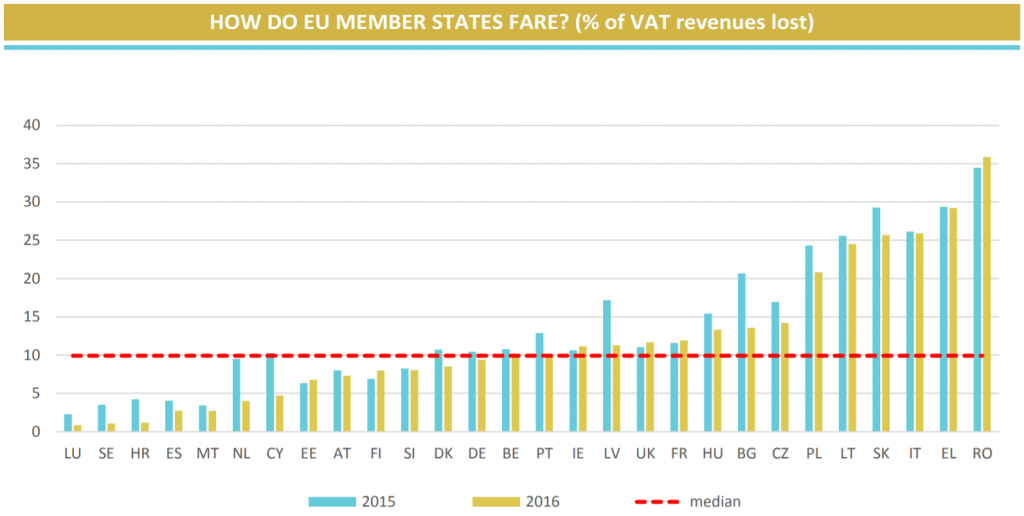The 2018 Report of the “Study and Reports on the VAT GAP in the EU-28 Member States” revealed that in 2016 there was a loss of 12.3% of the expected VAT revenue across the EU. This Report contains updated estimates for 2012-2016 and is a conclusion of the five reports previously published by the European Commission.
These findings are based on the VAT Gap, which refers to the difference between the expected and the actual VAT revenues. It is an important measure because it can reflect the revenue loss related to fraud and tax evasion, tax avoidance, corporate insolvency, bankruptcies and other miscalculations. Apart from that, it can also be seen as an indicator of national tax administrations performance.
According to the European Commission, VAT is a major source of tax revenue all over the EU, but at the same time different Member States have variable individual performances.
Overall, it is estimated that the total amount of VAT lost in 2016 in the EU is EUR 147.1 billion. This suggests a decrease in the VAT Gap of EUR 10.5 billion, 12.3% of total VAT revenues and a drop from 13.2% the previous year.
In 2016, only 6 countries of the EU-28 showed an increase in their VAT Gap: Romania, Finland, the UK, Ireland, Estonia, and France. With strong performances, each decreasing their gap by over five percentage points, was Bulgaria, Latvia, Cyprus, and the Netherlands.
Furthermore, the country with the lowest percentage of VAT revenues lost is Luxembourg, with only 0.85%, and Romania has the highest one, 35.88%. This translates a range of national VAT Gap estimations from 29 to 6.137 million Euros.

Nevertheless, the VAT Gap decreased in 22 out of the 28 Member States and the European Commission is developing further research on the impact of several determinants nationally.



